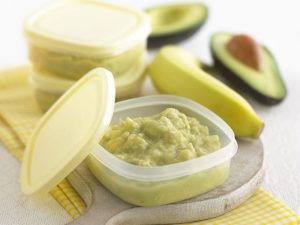Around 6 months of age, most babies are ready to start exploring solid foods alongside breast milk or formula. This exciting new stage can be a fun time for both you and your baby. But it’s also important to introduce beef and vegetable puree for baby safely and gradually.
This article will discuss the benefits of introducing beef and vegetable purees to your baby’s diet, along with some delicious and nutritious recipe ideas.
We will cover:
- When to introduce beef and vegetables to babies
- Benefits of beef and vegetables for babies
- Choosing safe and healthy ingredients for your baby
- Easy and delicious beef and vegetable puree recipes for babies
- Tips for introducing beef and vegetable purees to your baby
When to Introduce Beef and Vegetables to Babies
The American Academy of Pediatrics (AAP) recommends introducing solid foods around 6 months of age. Signs your baby might be ready for solids include:
- Good head control
- Ability to sit with support
- Loss of the tongue-thrust reflex
- Showing interest in food
If you have any questions or concerns about introducing solids to your baby, talk to your doctor or pediatrician.
Benefits of Beef and Vegetables for Babies
Beef and vegetables offer a variety of important nutrients for your baby’s growth and development:
Beef:
A rich source of iron, which is essential for healthy brain development.
Vegetables:
Provide essential vitamins, minerals, and fiber to support your baby’s overall health.
Choosing Safe and Healthy Ingredients for Your Baby
When selecting ingredients for your baby’s purees, look for:
- Fresh or frozen vegetables: These are typically more nutritious than canned vegetables.
- Lean cuts of beef: Opt for lean ground beef or sirloin to reduce fat content.
- Organic options (optional): While not necessary, some parents choose organic ingredients.
Here are some additional tips for choosing safe and healthy ingredients:
- Avoid added sugar, salt, and honey: These are not recommended for babies under 1 year old.
- Choose ripe vegetables: Ripe vegetables will have the sweetest flavor and be easiest to puree.
- Wash all produce thoroughly: This helps remove dirt and bacteria.
Easy and Delicious Beef and Vegetable Puree Recipes for Babies
Here are some easy and delicious beef and vegetable puree recipes to get you started:
- Simple Beef and Sweet Potato Puree: This is a classic and nutritious combination. Simply steam or roast sweet potatoes until tender, then puree with cooked ground beef.
- Broccoli and Beef Medley: Steam or roast broccoli florets until tender. Puree with cooked ground beef and a sprinkle of baby cereal (optional) for thickening.
Here are some additional recipe variations to explore as your baby gets older:
- Beef and Butternut Squash Puree: Butternut squash adds a naturally sweet flavor to this puree.
- Beef and Carrot Delight: Carrots are a great source of vitamin A, important for eye health.
- Beef and Green Bean Puree: Green beans add a pop of color and nutrients to this puree.
Remember: Always start with single-ingredient purees to check for allergies before introducing multiple ingredients.
Introducing Beef and Vegetable Purees to Your Baby
Here are some tips for introducing beef and vegetable purees to your baby:
- Start with small amounts: Begin with just a spoonful or two of puree at first.
- Offer one new food at a time: Wait a few days before introducing another new food to identify any allergies.
- Be patient: It may take your baby a few tries to get used to new flavors and textures.
- Let your baby take the lead: Don’t force your baby to eat if they’re not interested.
Here are some additional tips to make mealtime enjoyable for your baby:
- Use a spoon designed for feeding babies.
- Let your baby sit upright in a highchair.
- Make mealtime a positive and relaxed experience.
Tips for Success
- Variety is Key: Introduce a variety of vegetables and proteins to ensure your baby receives a wide range of nutrients.
- Texture Matters: As your baby progresses, gradually increase the texture of purees to encourage chewing and oral motor development.
- Safety First: Always supervise your baby during feeding and introduce new foods one at a time to monitor for allergies or sensitivities.
Exploring Textures and Flavors with Purees
As your baby progresses with purees, you can introduce them to a wider variety of textures and flavors. Here are some ideas:
- Grain Options: Consider adding cooked oatmeal, barley, or baby cereal to some purees for a thicker consistency.
- Fruit Additions: Once your baby has tried a few vegetables, explore introducing pureed fruits like apples, pears, or bananas.
- Herb Adventures: A tiny pinch of dried herbs like thyme or rosemary can add a subtle flavor dimension (consult your doctor first).
Remember, introducing new flavors is a journey of discovery for your baby. Be patient, have fun, and make mealtimes a positive experience!
Mashing and Mixing: Exploring Thicker Consistencies
As your baby gets the hang of purees, you can gradually introduce thicker consistencies. Here are some ideas:
- Mashed Options: Mash cooked vegetables like sweet potatoes, peas, or avocado for a thicker, lumpier texture.
- Mixing it Up: Combine purees with mashed fruits or vegetables for a variety of textures and flavors.
- Finger Food Fun: Offer soft, steamed veggie sticks like broccoli florets or ripe banana slices for your baby to explore and self-feed.
Remember, the key is to offer a variety of textures and flavors while keeping safety a top priority.
Conclusion
Introducing beef and vegetable purees can be a fun and rewarding way to expand your baby’s palate and dietary intake. By following these tips and recipe ideas, you can create healthy and delicious purees that your baby will love.
Remember: Always consult with your doctor or pediatrician before introducing solid foods to your baby, especially if they have any health concerns or allergies.
Here are some additional resources you may find helpful:
- The American Academy of Pediatrics (AAP) healthychildren.org provides a wealth of information on infant and child nutrition, including introducing solid foods.
- The National Institutes of Health (NIH) nichd.nih.gov also offers resources on child development and nutrition.
These resources can provide you with up-to-date information and answer any questions you may have about introducing solid foods to your baby.




